Lower back tightness – a nagging discomfort that seems to creep into our lives when we least expect it. Whether it’s triggered by a strenuous workout, a long day at the desk, or simply bending the wrong way, that feeling of constriction can turn a good day into a struggle. But what if you didn’t have to simply endure it? What if you could not only manage this annoyance but actively prevent it from interrupting your life? In this essential guide, we’ll delve into the hidden causes of lower back tightness, and arm you with the tools you need to reclaim your flexibility and freedom from that restricting pain. So, read on, as we unveil the path to a pain-free existence!
Contents
Identifying the Symptoms of Lower Back Tightness
 Lower back tightness is not just a vague discomfort; it presents itself in specific ways that can be recognized and understood. Identifying these symptoms is the first step towards addressing the issue and finding appropriate solutions. Here’s a closer look at the typical signs and sensations associated with lower back tightness:
Lower back tightness is not just a vague discomfort; it presents itself in specific ways that can be recognized and understood. Identifying these symptoms is the first step towards addressing the issue and finding appropriate solutions. Here’s a closer look at the typical signs and sensations associated with lower back tightness:
- Stiffness and Restricted Movement: One of the hallmark signs of lower back tightness is a feeling of stiffness that restricts movement. You may find it challenging to bend forward, backward, or side-to-side, and the tightness might make daily activities like tying your shoes or reaching for objects cumbersome.
- Constant or Intermittent Aching: This can range from a dull, continuous ache to a more sporadic and sharp pain. It might get worse after prolonged sitting, standing, or during certain movements.
- Tenderness to Touch: The lower back area may become sensitive or tender to touch. Pressing or massaging the area might cause discomfort or even pain.
- Muscle Spasms: Sudden and involuntary muscle contractions can occur, leading to a sharp, intense pain. These spasms might happen while moving or even at rest, sometimes waking you from sleep.
- Difficulty in Maintaining Posture: You might notice difficulties in maintaining an upright posture, and there might be an inclination to slouch or hunch to alleviate the tightness.
- Altered Gait or Walking Pattern: In more severe cases, the tightness might even affect the way you walk, leading to a noticeable limp or altered gait.
Understanding and recognizing these symptoms is vital for anyone dealing with lower back tightness. Not only does it empower you to take appropriate self-care measures, but it also helps in communicating your symptoms to healthcare professionals if needed.
Common Causes of Lower Back Tightness
 Lower back tightness is a widespread complaint, but its root causes can be diverse and multifaceted. It can stem from daily habits, occupational demands, or even underlying medical conditions. So, here are the common factors that can lead to lower back tightness:
Lower back tightness is a widespread complaint, but its root causes can be diverse and multifaceted. It can stem from daily habits, occupational demands, or even underlying medical conditions. So, here are the common factors that can lead to lower back tightness:
Muscle Strain or Overuse
Activities that involve heavy lifting, repetitive movements, or sudden twists can strain the muscles in the lower back. Even everyday tasks like gardening or lifting groceries can lead to overuse and tightness if not done with proper care.
Poor Posture
Slouching, hunching, or sitting for extended periods without proper support can put undue stress on the lower back muscles, leading to chronic tightness.
Lifestyle Factors
Sedentary behavior, lack of exercise, obesity, and wearing high-heeled shoes regularly can all contribute to lower back discomfort.
Underlying Health Conditions
Conditions such as herniated discs, arthritis, spinal stenosis, or osteoporosis can cause or exacerbate lower back tightness. These require professional medical diagnosis and treatment.
Pregnancy
The added weight and changes in the body’s center of gravity during pregnancy often lead to increased pressure on the lower back, resulting in tightness.
Improper Footwear or Sleeping Surfaces
Wearing shoes without proper arch support or sleeping on a mattress that’s too soft or too firm can misalign the spine and cause lower back discomfort.
Aging
As we age, our muscles lose flexibility and strength, making them more prone to tightness and injury.
Certain Occupations
Jobs that require long hours of sitting, standing, or lifting heavy objects put employees at higher risk of developing lower back tightness.
Understanding these causes offers a pathway to not only alleviating existing lower back tightness but also preventing future occurrences. Remember, recognizing the root of the problem is the first step toward a more comfortable and agile life.
Exercises and Stretches for Lower Back Flexibility
Enhancing flexibility and strength in the lower back region not only alleviates existing discomfort but also helps in preventing future instances of tightness. So, here are some targeted exercises and stretches that can be incorporated into your daily routine. Each offers specific benefits to the lower back, contributing to overall well-being.
Cat-Cow Stretch
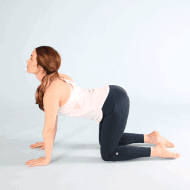
- How It’s Done: Start on your hands and knees in a tabletop position. Inhale as you arch your back, dropping your belly towards the floor and lifting your head and tailbone towards the ceiling (Cow Pose). Exhale as you round your back, tucking your chin to your chest and drawing your belly button towards your spine (Cat Pose). Repeat this motion 10-15 times.
- Benefits: This stretch increases flexibility and mobility in the spine, helping to relieve tightness in the lower back.
Child’s Pose

- How It’s Done: Begin in a tabletop position. Sit back on your heels, reaching your arms forward and lowering your chest towards the floor. Hold this position for 30 seconds to 1 minute, feeling a gentle stretch in the lower back.
- Benefits: This relaxing pose stretches the lower back muscles, promoting relaxation and flexibility.
Bridge Exercise
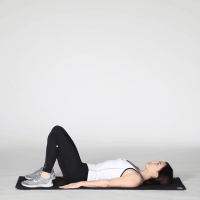
- How It’s Done: Lie on your back with your knees bent and feet flat on the floor. Pressing into your feet, lift your hips towards the ceiling, squeezing your glutes at the top. Lower down and repeat 10-15 times.
- Benefits: This exercise strengthens the lower back, glutes, and core muscles, supporting a healthy spine.
Pelvic Tilt

- How It’s Done: Lying on your back with knees bent, engage your abdominal muscles to tilt your pelvis slightly upwards, flattening your lower back against the floor. Hold for a few seconds, then release. Repeat 10-15 times.
- Benefits: This exercise helps in improving posture and alignment, reducing strain on the lower back.
Piriformis Stretch
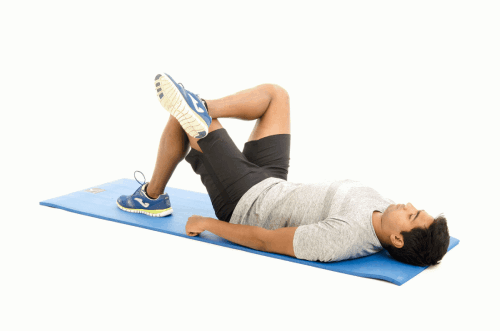
- How It’s Done: Lie down on the floor with one leg extended and the other leg crossed over, foot flat on the floor. Gently twist towards the bent knee, holding for 15-30 seconds. Repeat on the other side.
- Benefits: This stretch targets the piriformis muscle, which can contribute to lower back tightness if tense.
Bird-Dog Exercise
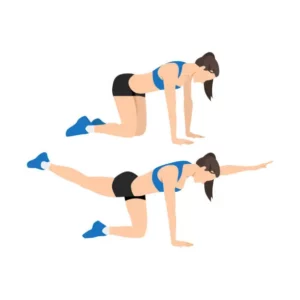
- How It’s Done: Start in a tabletop position. Extend one arm forward and the opposite leg back, keeping your body in a straight line. Hold for a few seconds, then return to the starting position. Repeat on the other side, performing 10-15 repetitions on each side.
- Benefits: This exercise enhances stability and strength in the lower back and core.
Incorporating these exercises and stretches into a regular routine can be a game-changer for those experiencing lower back tightness. They target not just the symptoms but the underlying causes of discomfort, providing a comprehensive approach to improving lower back health. Remember, it’s always wise to consult with a healthcare provider or fitness professional to ensure these exercises are suitable for your specific situation.
Medical Conditions Caused Due to Lower Back Tightness
Lower back tightness may not only be a symptom but also a sign of underlying medical conditions. Recognizing these conditions can be vital in addressing the root cause of the tightness and seeking appropriate medical intervention. Therefore, here are some specific medical conditions that may cause or worsen lower back tightness:
- Herniated Discs: A condition where the soft center of a spinal disc pushes through a crack in the tougher exterior casing, leading to irritation of nearby nerves.
- Spinal Stenosis: Narrowing of the spinal canal that can compress the nerves, often resulting in pain and tightness in the lower back.
- Osteoarthritis: Degeneration of cartilage between the joints, including those in the spine, may lead to stiffness and pain in the lower back region.
- Muscle Spasms: Sudden, involuntary muscle contractions can create sensations of tightness in the lower back and may be associated with various underlying conditions.
- Infections of the Spine: Though rare, infections in the spine can lead to discomfort, including lower back tightness.
Understanding these medical conditions offers a more comprehensive view of lower back tightness. If the tightness persists or worsens, it is advisable to consult a healthcare provider, as proper diagnosis and treatment are essential in addressing the underlying cause effectively.
Therapeutic Approaches to Relieve Lower Back Tightness
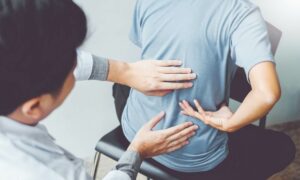 Lower back tightness can be not just a fleeting discomfort but a hindrance to daily activities if not addressed. Fortunately, here’s a comprehensive guide to some of the most effective treatments:
Lower back tightness can be not just a fleeting discomfort but a hindrance to daily activities if not addressed. Fortunately, here’s a comprehensive guide to some of the most effective treatments:
- Physical Therapy
Under the guidance of a trained physiotherapist, individuals can learn specific exercises and stretches tailored to their needs. These exercises can enhance flexibility, boost strength, and improve posture, all essential components in tackling lower back tightness. - Massage Therapy
A skilled massage therapist can work wonders in releasing muscle knots and tension in the lower back. Techniques like Swedish massage, deep tissue massage, and trigger point therapy can be particularly beneficial in relaxing tight muscles and promoting circulation. - Acupuncture
An ancient Chinese practice, acupuncture involves inserting thin needles at specific points in the body to alleviate pain and promote healing. Several individuals find relief from lower back tightness through regular acupuncture sessions, as it can help balance the body’s energy and reduce muscle tension. - Chiropractic Care
Chiropractors are trained to address alignment issues in the spine, which can often be the underlying cause of lower back tightness. Through manual adjustments and manipulations, they can help restore proper alignment, reducing tension and discomfort. - Medications
Over-the-counter pain relievers, like ibuprofen or naproxen, can offer temporary relief from pain and inflammation associated with lower back tightness. In chronic or severe cases, doctors might prescribe muscle relaxants or stronger painkillers. - Heat and Cold Therapy
Alternating between heat and cold packs can be a simple yet effective approach to managing lower back tightness. While cold packs reduce inflammation and numb the area, heat relaxes tight muscles and improves blood flow. - Lifestyle Changes
Simple modifications, like ensuring ergonomic workspaces, practicing good posture, and taking regular breaks from prolonged sitting, can go a long way in preventing and alleviating lower back tightness.
It’s essential to note that what works best can vary from one individual to another. Therefore, experimenting with a combination of these therapies, under the guidance of a medical professional, can pave the way to a more comfortable and flexible lower back.
Conclusion
Lower back tightness can be more than a mere inconvenience; it can significantly impact your quality of life. But the path to relief doesn’t have to be complex or overwhelming. Understanding the underlying causes, and exploring the available therapeutic approaches can empower you to take control of your well-being.
Remember, professional guidance is often key to a successful recovery, and personalized care can make all the difference. So, if you’re experiencing Back pain, physical therapy for back pain at PhysioMantra can help: Book an online physical therapy session.



